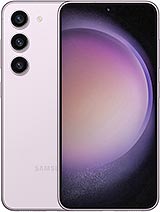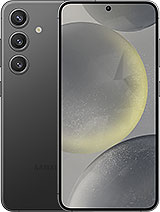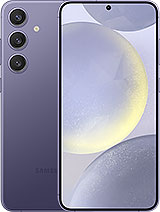Samsung Galaxy S24 review

Display
The Galaxy S24 packs a 6.2-inch Dynamic LTPO AMOLED 2X display, up from 6.1-inch non-LTPO screen. It now has thinner bezels, has the same resolution (1,080 x 2,340, 416ppi), and offers a 120Hz dynamic refresh rate though now more variable thanks to the LTPO tech. Naturally, there is also HDR10+ support.
The display is protected with a Gorilla Glass Victus 2 shield.

Samsung is advertising this screen not only for its more dynamic refresh rate, but also for the 2,600 nits of peak brightness - 50% brighter than the Galaxy S23's.
We've completed our brightness test, and the manual brightness is in line with previous Galaxy S models - 446nits in its default mode and 785nits with the Extra brightness boost from Settings.
The Auto brightness, just as promised, is now higher - we measured 1,401nits with our standard white patch taking up 75% of the screen. Once we started to shrink the white patch, the brightness went north of 2,000nits so we have no doubt the advertised values are achievable.
The minimum brightness at the all-white screen was just 0.9nitm which is great too.
Refresh rate
The Galaxy S24 comes with an LTPO display, and it supports a dynamic refresh rate. It still has two Motion Smoothness modes - Adaptive (refresh rate) and Standard (refresh rate). According to the description, the Adaptive one switches automatically between different modes and can do up to 120Hz, while the Standard one does the same, but can go up to 60Hz for longer battery life.

When using the Adaptive mode, we saw the screen use 120Hz across the interface and all compatible apps and quite a few games. When the picture is static, then the software usually dials down to 24Hz in most cases. We noticed 80Hz, 70Hz, 50Hz and a few other values when switching between apps, videos, browsing, etc.
Video streaming and playback is done in an adaptive fashion, too, depending on the frame rate. For example, 24fps videos are shown at a 24Hz refresh rate, 30fps use 30Hz, and we also saw 60Hz used on 48fps and 60fps videos across different apps.
The Always-on display works with 24Hz refresh rate and that's the lowest value possible, at least according to the Android refresh rate indicator.
When using the Standard mode, the refresh rate behaves as in Adaptive - using 24Hz, 30Hz, and 60Hz where applicable. Games and videos playback will not use 120Hz modes if Standard is selected.
Battery life
Our new Active Use Score is an estimate of how long the battery will last if you use the device with a mix of all four test activities. You can adjust the calculation based on your usage pattern using the sliders below. You can read about our current battery life testing procedure here. For a comprehensive list of all tested devices so far, head this way.
New chipset, new display, larger battery, better software. Three things that should be responsible for good, and hopefully even better battery life than the Galaxy S23's. And indeed, the Galaxy S24 scored very well across all of our battery life routines.

The new Galaxy S24 achieved an Active Use Score of 12:07, 40 minutes more than the Galaxy S23. Furthermore, the new display allowed for better video playback time, probably because of the lower refresh rate used during that time.
Charging test
The Galaxy S24 is the only one of the flagship trio to be limited to 25W fast wired charging.
Just like the Plus and the Ultra, the standard version also supports 15W wireless and reverse wireless charging.

We completed our charging test with the original 25W Samsung charger that ships as a pre-order bundle.
We recorded 29% of charge in 15 minutes, 59% in 30 minutes and 100% in 75 minutes. This is in line with the Galaxy S23.
There is Battery Protection mode, which can help you achieve longer battery lifespan. You can choose between Basic (stops at 100% and starts again after a 5% drop), Adaptive (adjusts by your charging and sleep patterns), and Maximum (limit to 80%) behavior.
Speakers
The Galaxy S24 has stereo speakers of the hybrid variety - meaning there is one speaker at the bottom of the phone, and the earpiece acts as a second one. Just like those hybrid pairs go, the earpiece is quieter and focuses mostly on high and mid-tones, while the bottom full-blown speaker has bass and good vocals.

The Galaxy S24 also supports Dolby Atmos with Movie, Music, Voice and Auto presets. There is also a specific Dolby Atmos for Games option.
The speakers on the Galaxy S24 scored a Very Good mark on our loudness test. The audio quality is very good, too - the vocals are great, the high frequencies are well presented, but the bass is barely there.
Reader comments
- Xogah qide
- 10 Jan 2025
- Ng$
2025 may award 100k least 3 manthe
- SUBHAN
- 10 Jan 2025
- U{B
S24 come in 12 gb ram??
- Anonymous
- 21 Dec 2024
- Ixf
I think about the sound. Stereo speakers are important. I would like something that is louder than my s20. The truck I drive is to noisy













